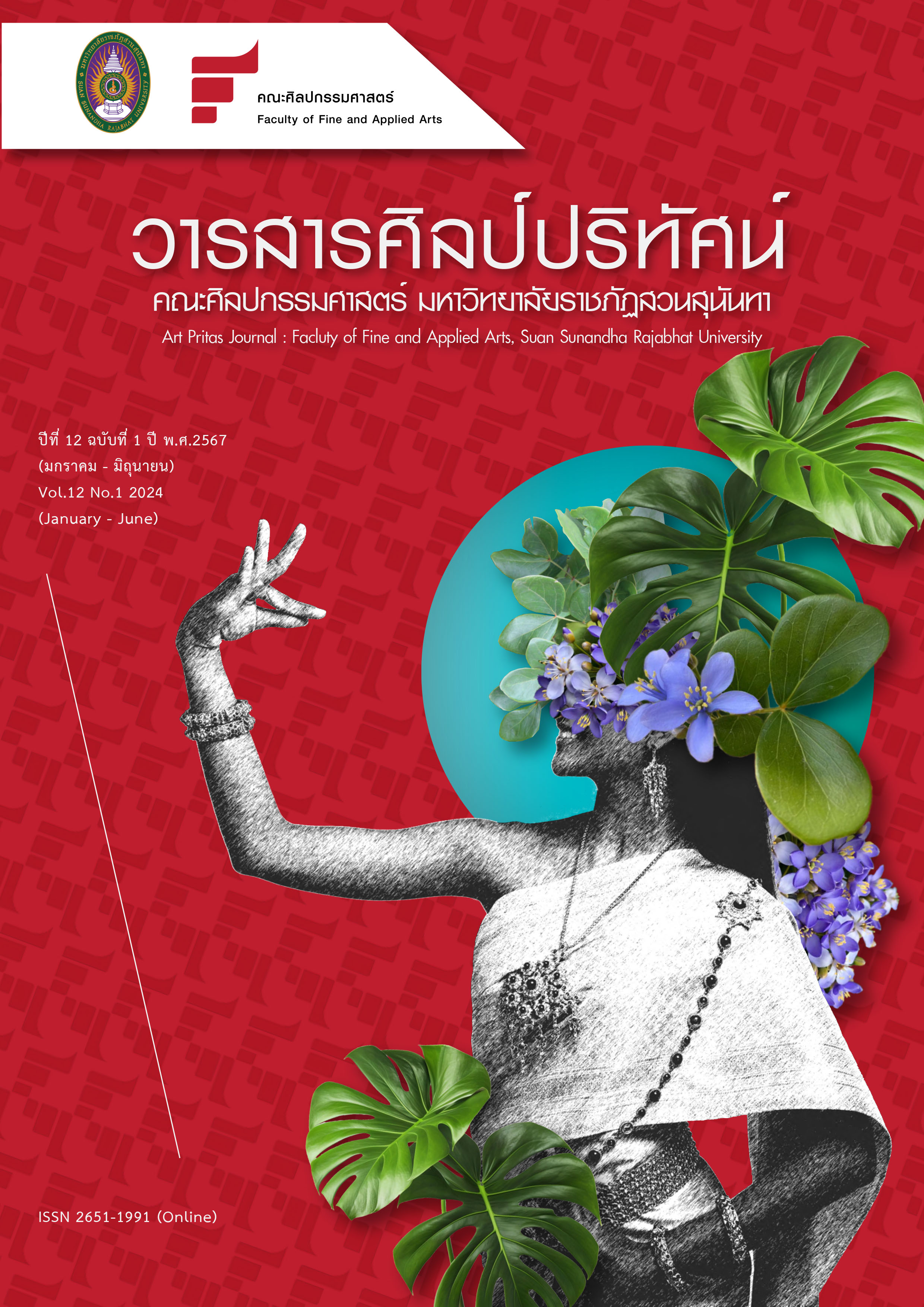EMOTIONALLY-INFORMED DESIGN IN INFORMATION GRAPHICS: A COMPARATIVE STUDY FROM CHINA'S REPUBLICAN ERA TO PRESENT AND ITS APPLICATION IN COVID-19 EDUCATIONAL GRAPHICS
Main Article Content
บทคัดย่อ
This research aims to accomplish two primary objectives. The first objective is to conduct a comprehensive analysis of the evolution of emotionally-informed design in Chinese information graphics, tracing its development from the Republican era to the present day. The study employs a qualitative analysis methodology, utilizing the three-tier theory of emotionally-informed design as a theoretical framework. The analysis compares representative cases of information graphics across different periods, juxtaposing them with theories of societal cultural looseness and tightness. The study hypothesizes that changes in societal cultural looseness and tightness correspond to variations in the emotional depth exhibited in information graphics. The validation of this hypothesis forms a crucial part of this research. The second objective is to apply the patterns and trends identified in the first objective to the creation of information graphics. The study will summarize and apply methods of emotionally-informed design corresponding to these trends to develop three COVID-19 educational information graphics that resonate with the current era. The ultimate goal of this research is to explore the expressive methods of emotionally-informed design at three levels, adapting to contemporary society's reading habits and consumption environment. This approach aims to achieve a harmonious fusion of tradition, art, information, and technology.
Article Details

อนุญาตภายใต้เงื่อนไข Creative Commons Attribution-NonCommercial-NoDerivatives 4.0 International License.
เนื้อหาและข้อมูลในบทความที่ลงตีพิมพ์ในวารสารศิลป์ปริทัศน์ ถือเป็นข้อคิดเห็นและความรับผิดชอบของผู้เขียนบทความโดยตรง ซึ่งกองบรรณาธิการวารสารไม่จำเป็นต้องเห็นด้วย หรือร่วมรับผิดชอบใดๆ
บทความ ข้อมูล เนื้อหา รูปภาพ ฯลฯ ที่ได้รับการตีพิมพ์ในวารสารศิลป์ปริทัศน์ถือเป็นลิขสิทธิ์ของวารสารศิลป์ปริทัศน์
เอกสารอ้างอิง
Gelfand, M. (2018). Rule Makers. Rule Breakers: How Tight and Loose Cultures Wire Our World.
Liu, S. (2011). Infographic Page Design Research. Master's Thesis, Shantou University. Retrieved from https://kns.cnki.net/KCMS/detail/detail.aspx?dbname=CMFD2012&filename=1011206634.nh
Liu, T. (2013). Interactive Infographic Design Research (Master's Thesis, Jiangnan University). Cnki. https://kns.cnki.net/KCMS/detail/detail.aspx?dbname=CMFD201401&filename=1013309516.nh
Liu, W. (2012). Knowledge-Based Infographic Design Research (Master's Thesis, Zhongnan University). Cnki. https://kns.cnki.net/KCMS/detail/detail.aspx?dbname=CMFD201401&filename=1014144394.nh
Norman, D. (2007). Emotional Design: Why We Love (or Hate) Everyday Things. New York City: Basic Books.
Wang, J. (2017). Research on Emotional Design of Information Graphics (Master's Thesis, Shenzhen University). Cnki. https://kns.cnki.net/KCMS/detail/detail.aspx?dbname=CMFD 201702&filename=1017813357.nh
Wu, P. (2016). User Experience Infographic Design Research (Master's Thesis, Wuhan University of Technology). Cnki. https://kns.cnki.net/KCMS/detail/detail.aspx?dbname=CMFD 201901&filename=1018806961.nh
Yu, J. (2015). Research on Emotional Design for Small Furniture (Master's Thesis, Zhongyuan Institute of Technology). Cnki. https://kns.cnki.net/KCMS/detail/detail.aspx?dbname=CMFD201601&filename=1016043364.nh


